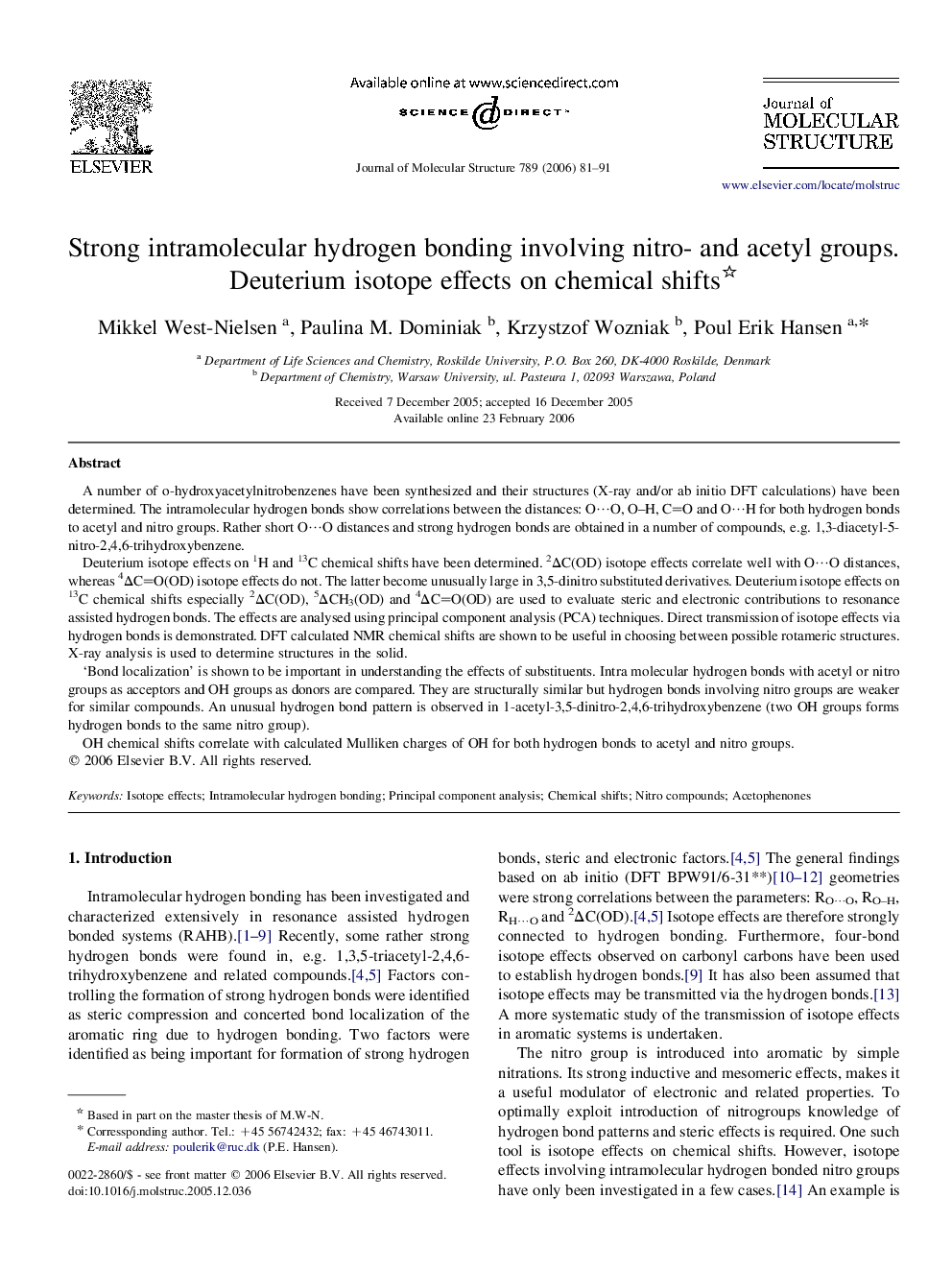| Article ID | Journal | Published Year | Pages | File Type |
|---|---|---|---|---|
| 1407715 | Journal of Molecular Structure | 2006 | 11 Pages |
A number of o-hydroxyacetylnitrobenzenes have been synthesized and their structures (X-ray and/or ab initio DFT calculations) have been determined. The intramolecular hydrogen bonds show correlations between the distances: O⋯O, O–H, CO and O⋯H for both hydrogen bonds to acetyl and nitro groups. Rather short O⋯O distances and strong hydrogen bonds are obtained in a number of compounds, e.g. 1,3-diacetyl-5-nitro-2,4,6-trihydroxybenzene.Deuterium isotope effects on 1H and 13C chemical shifts have been determined. 2ΔC(OD) isotope effects correlate well with O⋯O distances, whereas 4ΔCO(OD) isotope effects do not. The latter become unusually large in 3,5-dinitro substituted derivatives. Deuterium isotope effects on 13C chemical shifts especially 2ΔC(OD), 5ΔCH3(OD) and 4ΔCO(OD) are used to evaluate steric and electronic contributions to resonance assisted hydrogen bonds. The effects are analysed using principal component analysis (PCA) techniques. Direct transmission of isotope effects via hydrogen bonds is demonstrated. DFT calculated NMR chemical shifts are shown to be useful in choosing between possible rotameric structures. X-ray analysis is used to determine structures in the solid.‘Bond localization’ is shown to be important in understanding the effects of substituents. Intra molecular hydrogen bonds with acetyl or nitro groups as acceptors and OH groups as donors are compared. They are structurally similar but hydrogen bonds involving nitro groups are weaker for similar compounds. An unusual hydrogen bond pattern is observed in 1-acetyl-3,5-dinitro-2,4,6-trihydroxybenzene (two OH groups forms hydrogen bonds to the same nitro group).OH chemical shifts correlate with calculated Mulliken charges of OH for both hydrogen bonds to acetyl and nitro groups.
